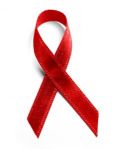Guest Blogger: Elizabeth Wingfield, Former WLP Intern
A recent Los Angeles Times editorial revealed that women are underrepresented in clinical trials of ways to treat and prevent HIV infection. While men make up 75% of the U.S. population living with HIV, women make up far less than 25% of most clinical trials. For example, according to the editorial, “a recent report on the promising ‘Quad’ pill — a single daily tablet that combines several medications — noted that one trial had 700 participants. Just 10% were women.” This underrepresentation may have negative health consequences because women metabolize drugs differently from men and some side effects vary based on sex.
The reason for the disparity in clinical studies is thought to be due to the fact that most women who are HIV positive in the U.S. are poor and are either black or Latina. Poor HIV positive women have “less access to medical treatment at universities doing research, and are therefore less likely to be found when researchers are recruiting.” Also, according to experts cited in the editorial, there “is a lingering mistrust of medical researchers in the black community… partly the legacy of exploitative experimentation on minorities. As a result, women and people of color have traditionally been underrepresented in clinical trials on numerous diseases and conditions.”
The editorial notes that some researchers are doing the right thing by making a greater effort to recruit women for clinical trials. More energy spent recruiting women helps to offset the reasons why poor women and women of color are less likely to participate in research. As an example, “the AIDS Clinical Trials Group has set a floor of 10% participation by women in studies, and it tries for 20%. In addition, it used grant money to hire community health ‘promoters’ at 10 research sites across the country whose job is to make people in minority communities aware of research projects.” Notably, two AIDS Clinical Trials group units run by UCLA last year managed to have a higher percentage of women participate in their studies than live with HIV in Los Angeles. The editorial ends by urging “community health providers… to be…aggressive about staying in touch with research institutions and keeping abreast of studies enrolling new participants [since] women should be encouraged to consider joining those studies.”
In Through the Lens of Equality: Eliminating Sex Bias to Improve the Health of Pennsylvania’s Women, the Women’s Law Project (WLP) discusses the ways in which sex bias in drug treatment trials negatively impacts women’s health. This bias turns women “into guinea pigs at the medical provider’s office and pharmacy, taking medications with little or no information about their safety or possible side effects,” and the exclusion from clinical trials also denies women the opportunity to receive treatments available and affordable only through the trial. WLP recommends several ways the Food and Drug Administration, other governmental officials, and pharmaceutical companies can address sex bias in clinical trials, including by offering solutions to practical barriers to participation in clinical trials (such as by providing childcare) and by requiring that the pool of participants in drug trials reflect the prevalence in groups with the condition the proposed drug aims to treat.


HIV/AIDS can be the cause of the most dreadful epidemic mankind has ever witnessed. Midway Research Center will provide the treatment for HIV/AIDS.